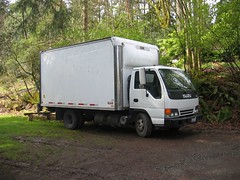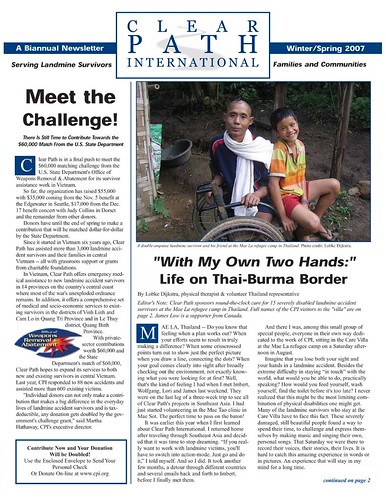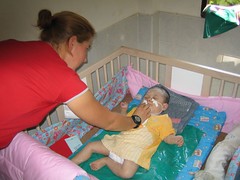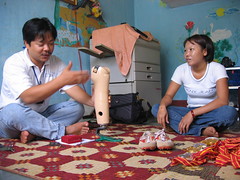Well, I finally did it. I finally broke down and looked at the temperature. I had been avoiding it. I figured its really better not to know. At least not yet. Not in March when its only almost the hot season. At the very least, I should wait until April - which is allegedly the hottest month here. So, I started playing a little game with myself, kind of like when you're at the gym, on the treadmill, and you play that game, the one I call, "absolutely, under no circumstances should you look at the time." Because what if, just what if you've been running for what feels like forever, your face is red, you've worked up a sweat, you might pass out, or worse yet, be in danger of having an actual heart attack - and then you glance down at the time and it says you've only been running for a minute and a half? Or maybe this is only a game I play. Anyhow... the same is true with the temperature here. Its hot. That's all I know. Its hot everyday. It was hot in the "cool season" when I arrived two months ago, and it continues to get hotter. My logic is that as long as I don't know the actual temperature, it can't be that bad. So, I avoid it. Except, suddenly people are talking about it all the time. Noting the weather forecasts, commenting on whether it will or won't hit 42 today. So, I did it. I took out the handy little compass/thermometer tucked inside my backpack and checked the temperature. Only 35 degrees! That's nothing. That's... well, I don't know - math isn't my strong suit - maybe 95 degrees Fahrenheit? That's not even over 100 yet! Its practically cool.
The problem of course, is the power outages. I read that they were coming. It makes sense. The temperature rises and people use more and more power (I assume in the form of air-conditioning and not some sort of increase in hot showers), and then the system can't take it and everything shuts down. Since I've resisted the temptation to actually use the air conditioning, it didn't occur to me that this would still impact me. But, tonight, as I sit in my dark apartment, I realize that the fans also run on electricity. And, fans are nice. Even though it was only 35 degrees today.
 Now, my only concern is the contents of my refrigerator. I hope my fish cheese isn't going to go bad. I know. I know what you're thinking. NO KIDDING - YOU WENT ALL THE WAY TO BATTAMBANG FOR THAT FISH CHEESE - IT BETTER NOT GO BAD!!! Of course, realistically - it sits out in the hot sun all day anyhow. Heck - I don't actually know if it needs to be refrigerated - just seemed like the right thing to do. Truth be told - I don't even know what it is. Its not cheese. That part I figured out. What it is though - that is the mystery.
Now, my only concern is the contents of my refrigerator. I hope my fish cheese isn't going to go bad. I know. I know what you're thinking. NO KIDDING - YOU WENT ALL THE WAY TO BATTAMBANG FOR THAT FISH CHEESE - IT BETTER NOT GO BAD!!! Of course, realistically - it sits out in the hot sun all day anyhow. Heck - I don't actually know if it needs to be refrigerated - just seemed like the right thing to do. Truth be told - I don't even know what it is. Its not cheese. That part I figured out. What it is though - that is the mystery. I'm not sure why, but my coworkers almost always instinctively know which food I will eat and which food not even to offer. The dried fish that we sometimes have at lunch is fabulous. The thing I tried on my second day, the thing which seemed to have the color and consistency of a prune, but was shaped more like celery and tasted like pure salt - that thing I wasn't so fond of. And so far, no one has even asked if I want to try the things that look like larvae. Like worm larvae if you ask me. I am grateful, as I wouldn't hesitate to turn that down. But, this fish cheese keeps coming up. Sometimes there is fish cheese in dishes at work. Its been offered to me, but I have managed to avoid it. I hesitate, I create excuses, I divert attention somehow. I mean - seriously - FISH CHEESE?!? What is that? I know it isn't actually cheese made from a fish. But, it looks like neither fish nor cheese. Then last month in Battambang, we stopped at the side of the road for hot dogs. No, not really hot dogs, but something that I always just assumed were hot dogs. My coworkers explained - fish cheese. After lots of inquiries, I think I figured it out. Its fish. Some sort of fish that looks like a hot dog and has the consistency of, well of a hot dog. But, also of mozzarella cheese. (perhaps this is why they call it that?) It comes in these little plastic bags, and has tasty things stuffed inside, like peppers or ginger or both. While, I didn't really want to try the "hotdog impostering fish", my Khmer friends offered more than once, and like I said - they usually know what I will eat and what I won't. Oh, and also, I was really hungry. And, its a long trip from Battambang back to Phnom Penh. So, I tried one. And, then I ate about 12. I think. I just know I ate so many, we ran out. It turns out, fish cheese is delicious. I asked if we could stop again - but apparently the only fish cheese worth buying, the good fish cheese - is only at that one stop, back in Battambang.
I'm not sure why, but my coworkers almost always instinctively know which food I will eat and which food not even to offer. The dried fish that we sometimes have at lunch is fabulous. The thing I tried on my second day, the thing which seemed to have the color and consistency of a prune, but was shaped more like celery and tasted like pure salt - that thing I wasn't so fond of. And so far, no one has even asked if I want to try the things that look like larvae. Like worm larvae if you ask me. I am grateful, as I wouldn't hesitate to turn that down. But, this fish cheese keeps coming up. Sometimes there is fish cheese in dishes at work. Its been offered to me, but I have managed to avoid it. I hesitate, I create excuses, I divert attention somehow. I mean - seriously - FISH CHEESE?!? What is that? I know it isn't actually cheese made from a fish. But, it looks like neither fish nor cheese. Then last month in Battambang, we stopped at the side of the road for hot dogs. No, not really hot dogs, but something that I always just assumed were hot dogs. My coworkers explained - fish cheese. After lots of inquiries, I think I figured it out. Its fish. Some sort of fish that looks like a hot dog and has the consistency of, well of a hot dog. But, also of mozzarella cheese. (perhaps this is why they call it that?) It comes in these little plastic bags, and has tasty things stuffed inside, like peppers or ginger or both. While, I didn't really want to try the "hotdog impostering fish", my Khmer friends offered more than once, and like I said - they usually know what I will eat and what I won't. Oh, and also, I was really hungry. And, its a long trip from Battambang back to Phnom Penh. So, I tried one. And, then I ate about 12. I think. I just know I ate so many, we ran out. It turns out, fish cheese is delicious. I asked if we could stop again - but apparently the only fish cheese worth buying, the good fish cheese - is only at that one stop, back in Battambang.So, I waited and waited for my next trip to our rice mill, and alas - I have a refrigerator full of fish cheese. I'm delighted. Except, now the power is out, and my only concern is whether fish cheese does or does not require refrigeration. I am going to assume not. And also hope the power comes back soon. And quite possibly spend the rest of the evening eating fish cheese.







 Not all landmine survivors are human. Many elephants are injured by mines while working in the jungles on the tense Thai-Burma border. Most are killed by their owners as caring for them is impossible.
Not all landmine survivors are human. Many elephants are injured by mines while working in the jungles on the tense Thai-Burma border. Most are killed by their owners as caring for them is impossible.






 From the
From the  It was a cluster bomb. It took his left hand above the wrist and his left leg below the knee. Shrapnel perforated his abdomen. The date was July 5, 2002 -- more than a quarter-century after the war in Vietnam ended.
It was a cluster bomb. It took his left hand above the wrist and his left leg below the knee. Shrapnel perforated his abdomen. The date was July 5, 2002 -- more than a quarter-century after the war in Vietnam ended.



 Cynthia Maung is well-known to Burmese in the border region, because her clinic in the Thai town of Mae Sot offers free healthcare, whatever the circumstances.
Cynthia Maung is well-known to Burmese in the border region, because her clinic in the Thai town of Mae Sot offers free healthcare, whatever the circumstances.